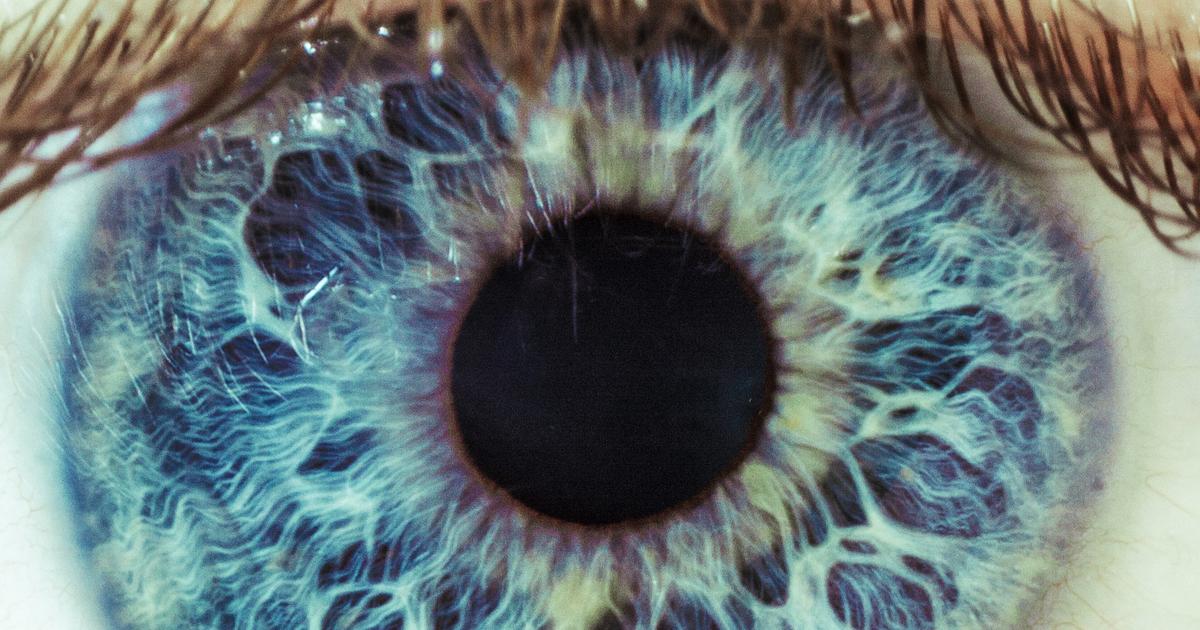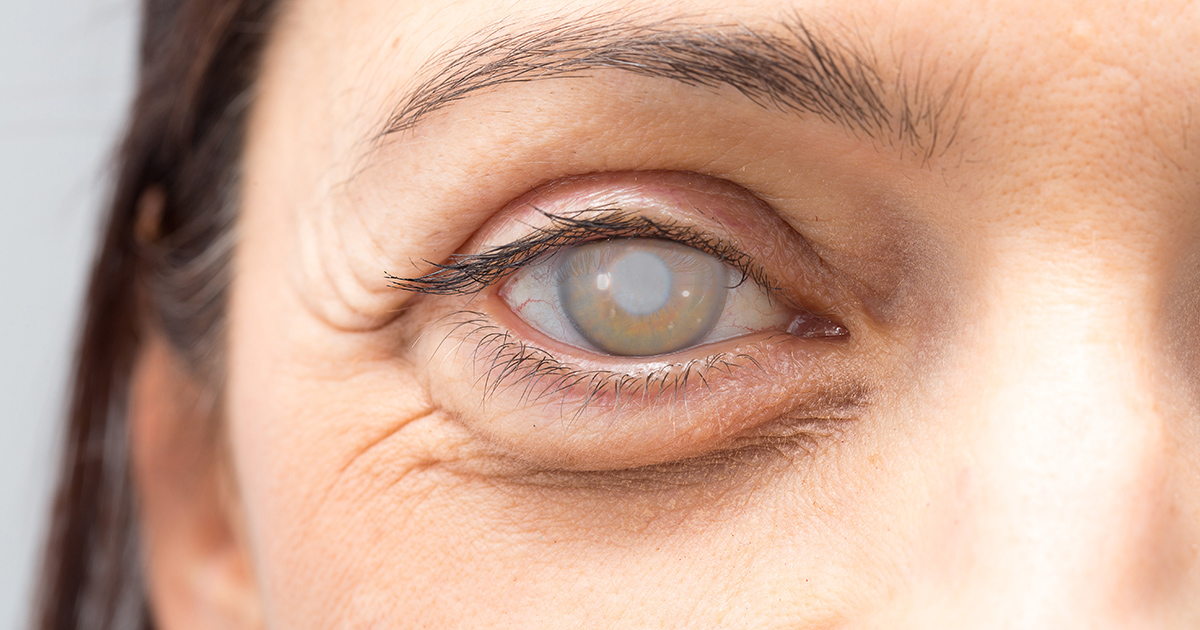What Causes A Sensitivity To Light?
Photophobia, also known as a sensitivity to light, is a condition where an individual's eyes experience pain when exposed to bright lights. Less severe cases of light sensitivity can cause an affected individual to squint and feel discomfort when they walk outside or into a brightly lit room. Severe cases of photophobia can trigger significant pain sensations when an affected individual's eyes are exposed to any kind of light. Other symptoms that occur in these patients include difficulty looking at pictures, reading a text, bright-colored floaters in the dark, aversion to light, and frequent squinting.
Light sensitivity is diagnosed with the use of a physical examination, standard eye examination, slit-lamp eye examination, MRI, and tear film examination. Depending on the underlying cause of photophobia, oral medications, eye drops, antibiotics, artificial tears, bed rest, surgery, and the use of tinted lenses are methods that may be used for treatment.
Eye Infection

An eye infection is the colonization of bacteria, parasites, or viruses in an individual's eye tissues that cause inflammation. An individual who has an eye infection may have discharge from one or both eyes, abnormal eyelid color, crusty substance on eyelashes and eyelids, pain, itchiness, swelling, blurry vision, and discoloration of the white of the eye. Another common symptom that occurs with eye infections in some individuals is a sensitivity to light.
Pinkeye, which is an infection of the conjunctiva; keratitis, an infection of the cornea; a stye; uveitis, the infection of the uvea; and fungal eye infections can all result in light sensitivity. The increased amount of swelling and inflammation that occurs in response to the invasion of a foreign pathogen in any of the eye tissues can cause the eye to be extremely sensitive to bright lights because of temporary functional impairment and the inability to adjust to bright light properly.
Lighter Eye Color

An individual affected by a sensitivity to light may experience this hypersensitivity as the result of them having a lighter eye color than others. The pigmentation in an individual's eyes does not only occur at the surface layer, and is actually contained in multiple layers of an individual's eye. The pigmentation in the eye is the result of a substance called melanin, which is also what gives the skin its pigmentation.
The purpose of melanin is to deflect harmful rays from the body tissues to prevent cellular damage. Therefore, individuals who have a darker eye color like brown and black have eyes that can deflect and protect the eye tissues from the bright rays of the sun and other artificial lights easier because they contain a higher concentration of melanin. Individuals who have lighter eye colors like blue and green do not have as much melanin, which can lead to an oversensitivity to bright rays of the sun and artificial light because the light is not deflected away from the tissues as well.
Uveitis

Light sensitivity may develop due to uveitis, a condition where an individual's uvea, the middle tissue layer of the eyewall, becomes inflamed. This condition can affect both or one of an individual's eyes. Uveitis is caused by an inflammatory disease, injury, autoimmune disorder, or an infection. Uveitis can cause a patient to experience eye redness, blurred vision, poor vision, eye pain, floaters, and sensitivity to light. Symptoms occur rapidly and progress quickly in affected individuals.
Uveitis can cause certain parts of the eye to lose function temporarily. The parts of the eye responsible for detecting and absorbing light can become impaired because of the inflammation of eye tissues. When the eye is not able to properly adjust to brighter light conditions very well, the affected individual will experience increased sensitivity to light. As long as a patient receives treatment within a reasonable time, photophobia caused by uveitis is usually not permanent.
Corneal Abrasion

A corneal abrasion is an injury that occurs in the eyes where the protective, transparent layer of the eye (the cornea) is scratched. Corneal abrasions are most commonly caused by contact with substances like dirt, wood shavings, contact lenses, dust, sand, metal particles, plant matter, or paper. Symptoms that occur in individuals who experience a corneal abrasion include gritty feeling in the eye, redness, headache, pain in the eye, tearing, and light sensitivity. An individual's cornea contains a high concentration of nerve cells, which causes it to be one of the most sensitive parts of the human body.
A corneal abrasion induces the natural response of the patient's immune system, which causes inflammation in the affected eye. The combination of the injury itself, swelling, and inflammation can cause the eye to be dysfunctional in its ability to adjust to bright light. A corneal abrasion near the center of the eye can cause light rays to enter the eye abnormally, which also causes photophobia.
Refractive Surgery

An individual who has undergone a procedure called refractive surgery may develop light sensitivity as a result. Refractive surgery is a surgical procedure that involves the correction of a refractive error in a patient's eyes. Refractive surgery is used to treat individuals affected by nearsightedness, astigmatism, farsightedness, and presbyopia. Refractive surgery may be done by reshaping the cornea or by implanting an artificial lens inside of the eye, and it does require some time for the patient's vision to recover.
Sensitivity to light is a common side effect that may be present for the first several days or weeks following this procedure. This symptom occurs because there is a significant alteration to the affected individual's corneal tissues when they undergo refractive surgery. This permanent change of the shape of the patient's eye can cause them to have a period of initial adjustment in function, which includes the ability to adapt to bright lighting. In rare cases, some patients who get refractive surgery may continue to have chronic light sensitivity for several years following their procedure.
Migraines

Around eighty percent of all individuals who have a sensitivity to light also experience a migraine at the same time. However, migraines are not the only type of headache known to produce this sensitivity, and tension headaches and cluster headaches are also common culprits. Light is let into the eye and carried to the individual's brain through the visual pathways from the retina. Cones in the retina are the structures responsible for the projection of an individual's visual pathway.
Other types of cells in the retina responsible for the projection of light are called melanopsin cells, which do not deactivate once they become activated by light. Both components are deeply connected to the individual's trigeminal system in the brain. It is thought that a migraine that causes both of these systems to react in a hypersensitive way to light simultaneously is the mechanism that produces a sensitivity to light.
Wearing Improper Contact Lenses

An individual affected by light sensitivity may be wearing improper contact lenses. Contact lenses are typically worn to correct visual deficits, though some individuals use contact lenses for novelty and cosmetic purposes. Contact lenses require a prescription from a doctor to obtain because they can seriously harm the eyes if they are used improperly. Improper contact lenses can cause an individual to experience inflammation in their eye that results in swelling, redness, and increased light sensitivity.
Improper contact lenses can also cause the eyes to become excessively dry, which is another condition known to produce a sensitivity to light. Improper contact lenses can greatly contribute to the development of an eye infection, which produces inflammation and photophobia. To prevent sensitivity to light from improper contact lenses, an individual should have a contact lens fitting and an eye examination by an ophthalmologist.
Certain Medications

An individual who takes certain medications may experience a sensitivity to light as an adverse side effect. There are also some supplements that produce light sensitivity. Common medications that induce sensitivity to light may include antihistamines, non-steroidal anti-inflammatory drugs, quinine, furosemide, oral contraceptives, estrogen-based contraceptives, sulfonamides, and tricyclic anti-depressants. Approximately one percent of individuals who use the medications naproxen and ibuprofen experience a painful sensitivity to light. Phenytoin, used for the treatment of seizures and epilepsy, can cause numerous vision-related adverse side effects, including a sensitivity to light.
Methotrexate can increase sensitivity to light in some individuals who take it. Methotrexate is used to treat rheumatoid arthritis and is used in chemotherapy cocktails to treat specific forms of cancer. The antibiotics doxycycline and tetracycline are used to treat certain bacterial infections, sexually transmitted diseases, urinary tract infections, and some forms of acne. These antibiotics are also known to produce light sensitivity and other eye-related side effects.
Meningitis

Meningitis is a condition characterized by the inflammation of the protective membranes that surround the brain or meninges. Along with migraines, sensitivity to light is one of the first symptoms to manifest in many meningitis patients. Light sensitivity can develop because of the migraines produced by the inflammation of the meninges and swelling of surrounding tissues. Light sensitivity may also develop if the tissues in the brain swell and cause an individual's optic nerve to become swollen and damaged.
The optic nerve is a bundle of nerve fibers responsible for the transmission of visual information from the retina to the visual processing centers of the brain. Issues with general visual performance is another mechanism that implicates meningitis as a cause of photophobia. Post-meningitis sensitivity to light can last for as long as months or years following the infection due to a chronic headache disorder or permanent optical nerve damage.
Cataracts

Light sensitivity is usually not apparent in the early stages of cataract development. However, cataracts are progressive and eventually cause a cloudy, abnormal growth on the eye lens. These cloudy growths on the eye lens can cause a patient to have trouble with their vision. Cataracts can also produce what is referred to as a disability glare in an affected individual. Disability glare is a light sensitivity that occurs when an individual has an eye disease or condition that adversely affects their visual function.
Disability glare is an increased sensitivity to normal lighting conditions that happens because the patient's eyes are not able to adjust to minor changes in light settings properly. Cataracts on the lens of the eye cause the incoming light to disperse and scatter, rather than focusing on the back of the eye onto the retina. This malfunction that occurs with the way a patient's eye takes in light and adjusts to light changes can cause them to have difficulty around any source of light that is only a mild degree of brightness.
